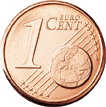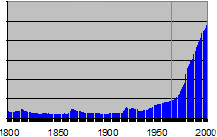Coin
|
|
- This article is about monetary coins. For alternative meaning see word coinage.

A coin is generally a piece of hard material, generally metal and usually in the shape of a disc, which is used as a form of money. Along with banknotes, coins make up the cash forms of all modern money systems. Coins are used for lower-valued units, and banknotes are used for the higher values.
| Contents |
Collecting coins
See Coin collecting and Numismatics for more information on the collecting of coins, bank notes and Exonumia.
The value of a coin
The market exchange value of a coin comes from its historic value, and/or the intrinsic value of the component metal (for example gold or silver).
However, in modern times, most coins are made of a base metal and their value comes strictly from their status as fiat money. This means that the value of the coin is decreed by government fiat rather than agreed by the people, which really makes it less a coin and more a token in the strictest sense.
To distinguish between these two types of coins, as well as from other forms of tokens which have been used as money, monetary scholars have defined three criteria that an object must meet to be a "true coin". These criteria are:
- It must be made of a valuable material, and trade for close to the market value of that material.
- It must be of a standardized weight and purity.
- It must be marked to identify the authority that guarantees the content.
By the above definition, the invention and first known usage of coins comes from the Kingdom of Lydia circa 643-630 B.C. Under three generations of Lydian kings, the money of Lydia gradually moved from being lumps of electrum (a naturally occurring alloy of silver and gold) to coins of a guaranteed weight and purity, marked with the seal of the King. True coins also developed very close to this time frame in both India and China.
The history of coins is a long and interesting one. For example, in 1979 and 1980 a Chinese architectural team excavating the region surrounding the ancient kingdom of Loulan discovered some Mesolithic stone tools and coins (see Loulan: Modern Chinese Expeditions).
Coin debasement
Throughout history, governments have been known to create more coinage than their supply of precious metals would allow. By replacing some fraction of a coin's precious metal content with a base metal (often copper or nickel), the intrinsic value of each individual coin was reduced (thereby "debasing" their money), allowing the coining authority to produce more coins than would otherwise be possible. Debasement of money almost always leads to price inflation unless price controls are also instituted by the governing authority. Some consider a classic example of this phenomenon to be the behavior of price levels in the United States since 1964 (the last year circulating United States Coins were minted of 90 percent silver).
Features of modern coinage
The milled edges still found on many coins were originally designed to show that none of the valuable metal had been shaved off the coin. Prior to the use of milled edges, circulating coins suffered from "shaving," a common problem where unscrupulous persons would shave a small amount of precious metal from the edge of a circulating coin. This is the reason some modern coins have ridges, known as "reeds," on their edges; the presence of reeding shows that the coin's edge has not been shaved. Circulating unmilled British sterling silver coins were known to be shaved to almost half of their minted weight. This form of debasement in Tudor England led to the formulation of Gresham's Law. The monarch would have to periodically recall, paying only bullion value of the silver, and re-mint circulating coins.
Traditionally the side of a coin carrying a bust of a monarch or other authority, or a national emblem, is called the obverse, or colloquially heads. The back side is called the reverse, or colloquially tails. However, the rule is violated in some cases. [1] (http://www.ucalgary.ca/~cns/euro.html) Another rule is that the side carrying the year of minting is the obverse, although most Canadian coins are an exception.
Coins are popularly used as a sort of two-sided die; in order to choose between two options with a random possibility, one choice will be labeled "heads" and the other "tails," and a coin will be flipped or "tossed" to see whether the heads or tails side comes up on top. See Bernoulli trial; a fair coin is defined to have the probability of heads (in the parlance of Bernoulli trials, a "success") of exactly 0.5. A widely publicized example of an asymmetrical coin is the Belgian one euro coin. See also coin flipping.
Coins are sometimes falsified to make one side weigh more. Such a coin is often said to be "weighted."
Some coins, called bracteates, are so thin they can only be struck on one side.
See also
- American_Numismatic_Association
- Bracteate
- Numismatics
- Exonumia
- Banknote
- British coinage
- Coin collecting
- Coinage Metals
- Counterfeit
- Currency
- Euro coins
- Irish coinage
- Polish coins
- Roman currency
- United States coinage
- List of coins
- Euler's disk
- Coinarama
- Coin flipping
External links
- The Numismatic Frontier (http://www.heritagecoin.com/features/numisarticles.php?id=96) article surveying the variety of coins in the world.
- Coin directory (http://www.allthecoins.com/) A dedicated to numismatic community site and huge catalog of coin resources.
- CoinFacts.com - The Internet Encyclopedia of US Coins (http://www.coinfacts.com/) Free information on United States Coins, including pricing, rarity, and historical information.
ca:Moneda
da:Mønt de:Münze el:Νόμισμα eo:Monero it:Moneta lv:Monēta nl:Munt ja:硬貨 no:Mynt pl:Moneta ro:Monedă ru:Монета simple:Coin sl:Kovanec sv:Mynt zh-min-nan:Gîn-kak-á

